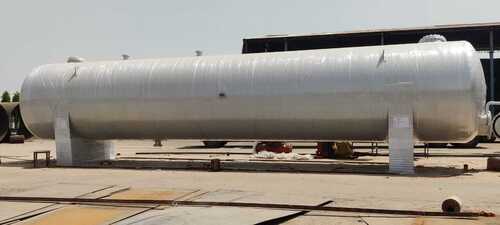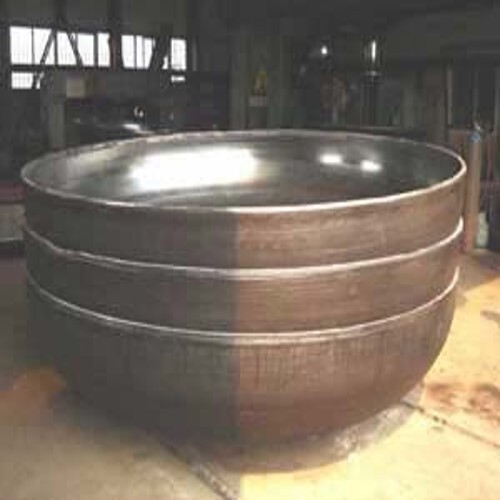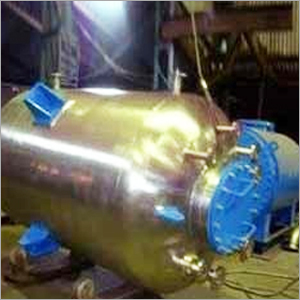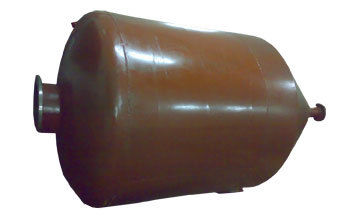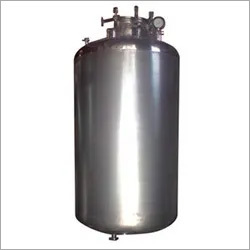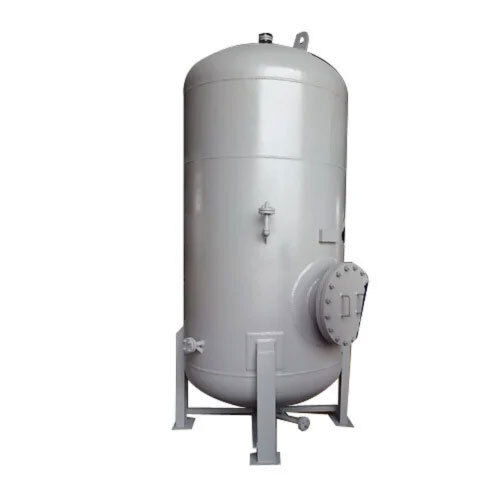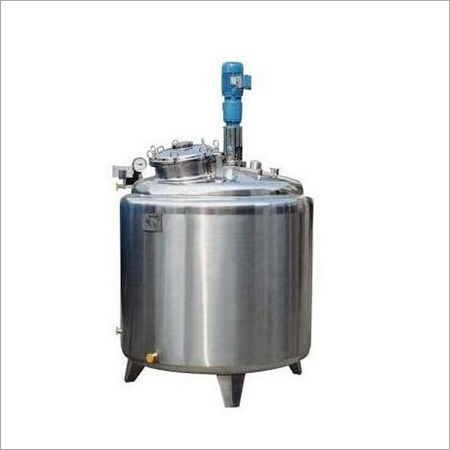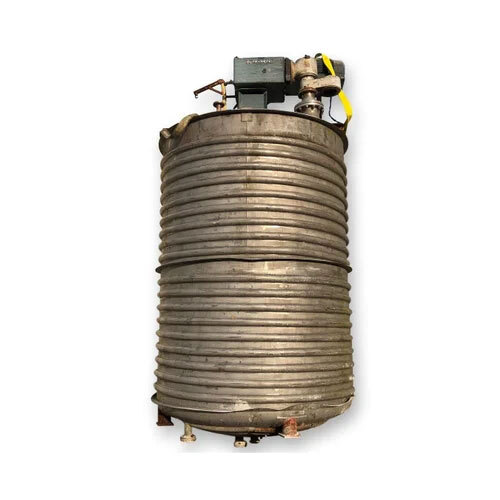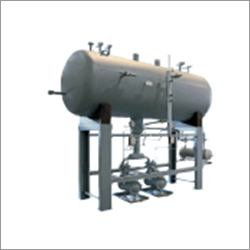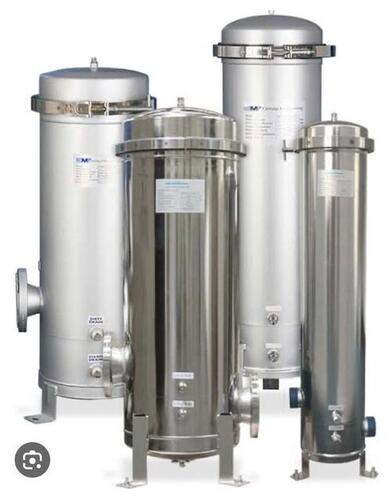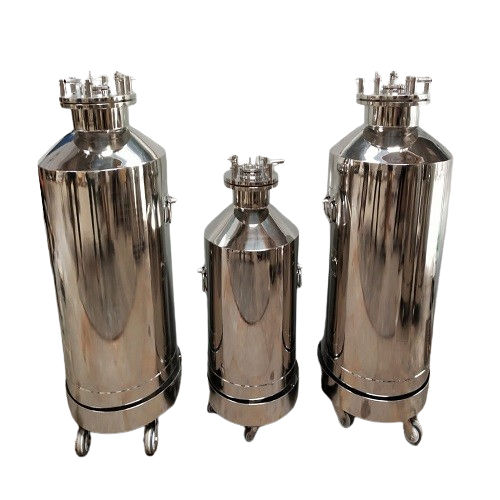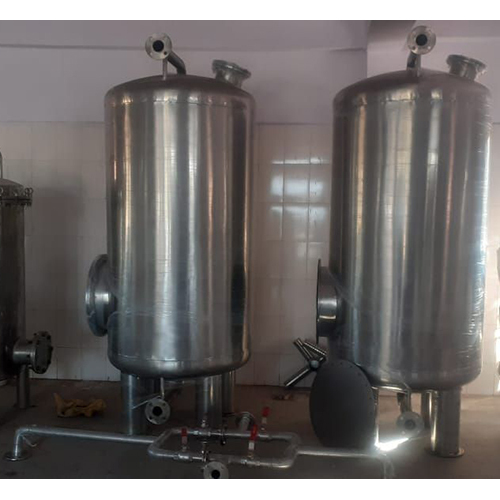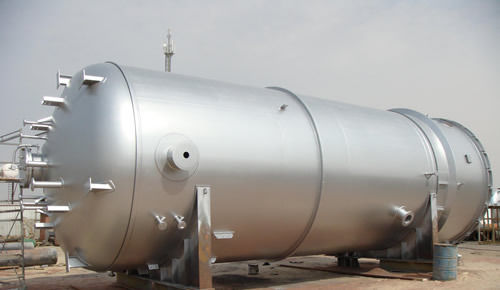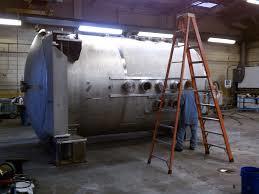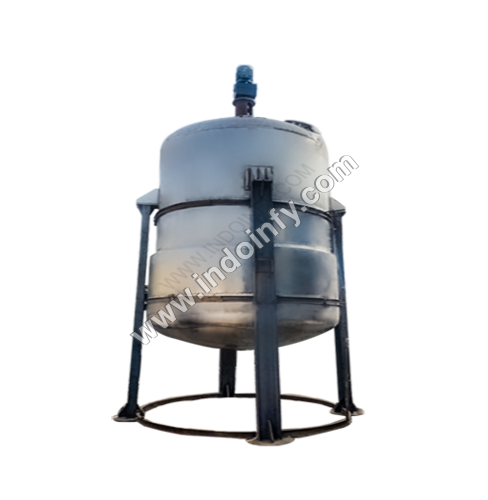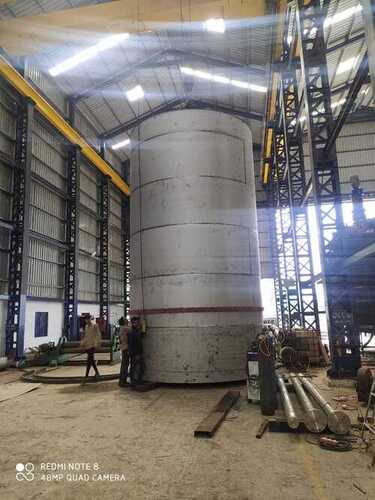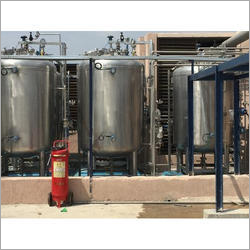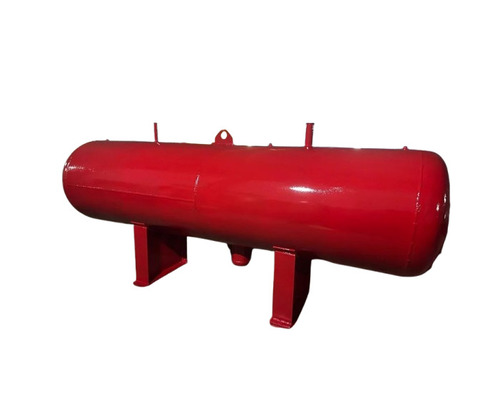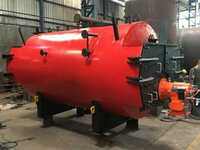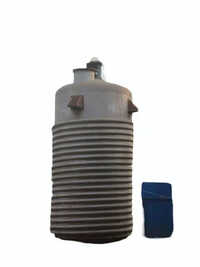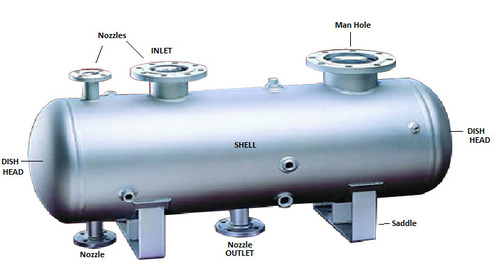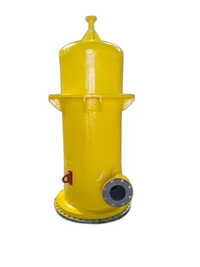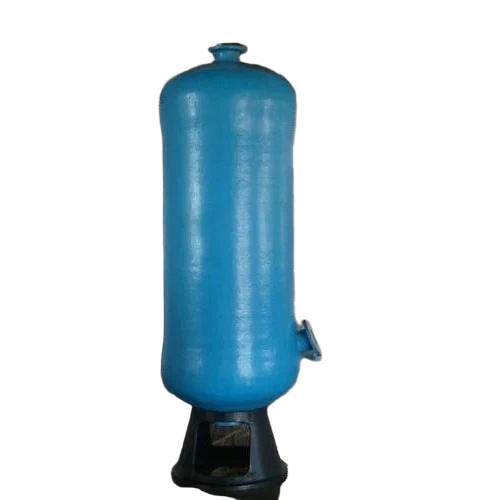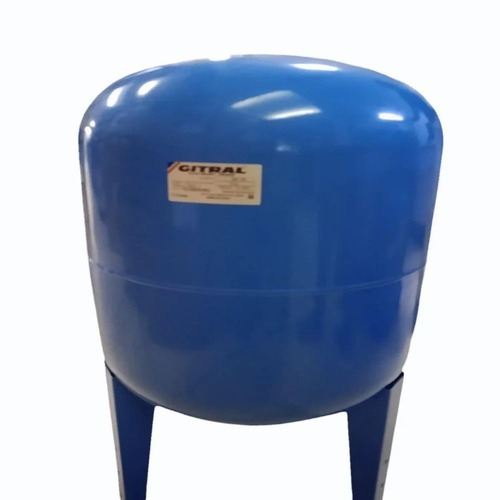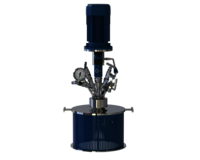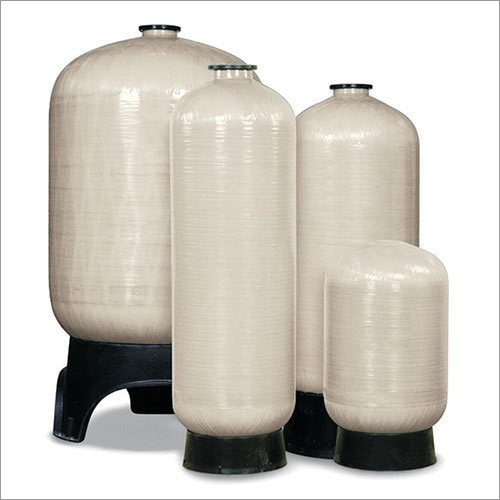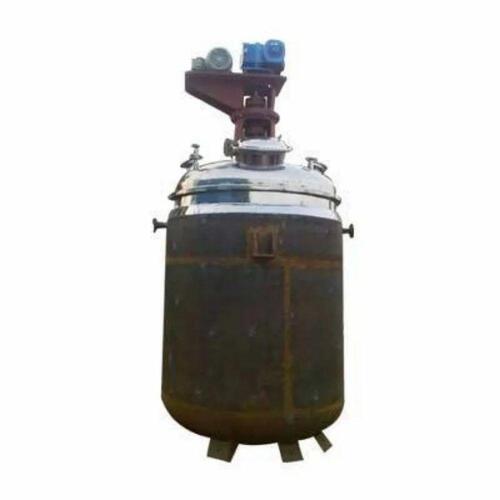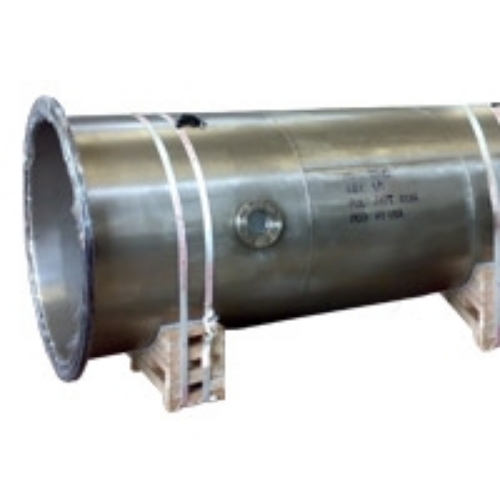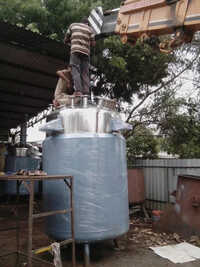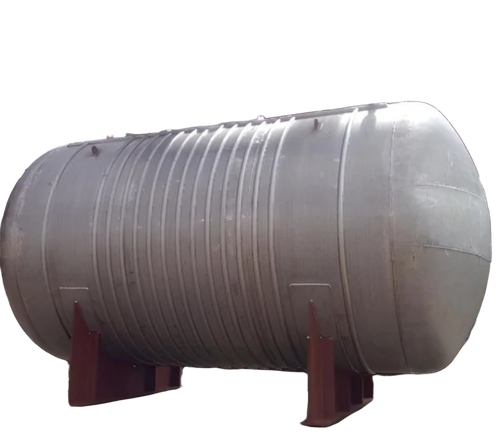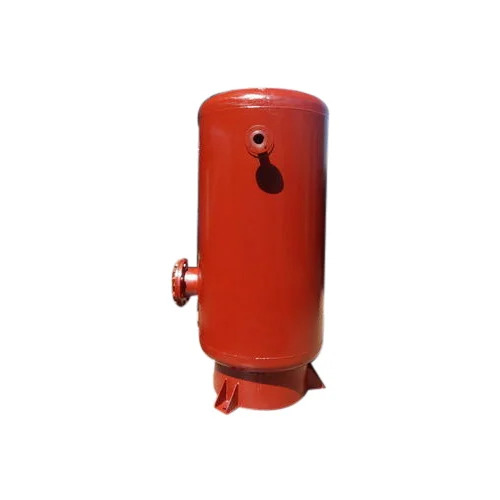Pressure Vessels
(4536 products)Pressure Vessels By Jd Engineering
MOQ1 Piece/Pieces
Payment TermsCash Against Delivery (CAD), Letter of Credit at Sight (Sight L/C), Cash Advance (CA), Cheque
Supply Ability10 Per Week
Delivery Time10 Days
Pressure Vessels By Jd Engineering
MOQ1 Piece/Pieces
Payment TermsCash Against Delivery (CAD), Letter of Credit at Sight (Sight L/C), Cash Advance (CA), Cheque
Supply Ability10 Per Week
Delivery Time10 Days
Pressure Vessel Heads
1000 INR (Approx.)/Piece
MOQ100 Kilograms/Kilograms
Main Domestic MarketAll India
Pressure Vessels By P-Square Technologies
Price: 25000 INR/Unit
MOQ1 Unit/Units
ColorGolden
Product TypePressure Vessels
UsageIndustrial
ApplicationIndustrial
SizeStandard
MaterialSS
P-square Technologies
Pune
 Super Bonanza
Super Bonanza Trusted Seller
Trusted Seller Super Premium
Super Premium Super Seller
Super Seller16 Years
Industrial Reaction Vessel - Capacity: 500 Ltr
Price: 300000 INR/Unit
MOQ1 Unit/Units
ApplicationIndustrial
ColorSilver
MaterialStainless Steel
Capacity500 Ltr
Product TypeReaction Vessel
ConditionNew
Ultra Febtech Private Ltd.
Ahmedabad
 Trusted Seller
Trusted Seller Super Premium
Super Premium Super Seller
Super Seller4 Years
Reaction Vessels - High Durability Quality Material | Ideal for Various Industrial Applications
Product DescriptionThese high quality Reaction Vessels are made by using very high quality raw material which ensures high durability at its user end. These Reaction Vessels are widely finds its applications in various industrial sectors
Steelfab Industries
Vasai
 Super Bonanza
Super Bonanza Trusted Seller
Trusted Seller Premium Seller
Premium Seller16 Years
Settler Vessel
Price: 200000.00 INR/Unit
MOQ1 Unit/Units
ApplicationChemical, Pharmaceutical, Food Processing Industries
TypeSettler Vessel
MaterialStainless Steel
Dimension (L*W*H)As per requirement
ConditionNew
Dipesh Engineering Works
Mumbai
 Trusted Seller
Trusted Seller Super Premium
Super Premium23 Years
Agitator Reaction Vessels Capacity: 1-5 Ton/Day
Price Trend: 350000.00 - 2000000.00 INR/Unit
MOQ1 Unit/Units
Product TypeVessels
MaterialStainless Steel
Capacity1-5 Ton/day
TypeGrain Processing Equipment, Oil Extraction Plant, Solvent Extraction Plant, Fluid Extraction Plants
ComputerizedYes
AutomaticNo
Sparktech Processes Llp
Mumbai
 Trusted Seller
Trusted Seller15 Years
Grey Ss Vertical Pressure Vessels
Price: 1000000 INR/Unit
MOQ1 Unit/Units
UsageIndustrial
Product TypeSS Vertical Pressure Vessels
ColorGrey
SizeDifferent available
ConditionNew
United Engineers & Consultants
Pune
 Trusted Seller
Trusted Seller Super Seller
Super Seller3 Years
Pressure Vessels By Jd Engineering
MOQ1 Piece/Pieces
Payment TermsCash Against Delivery (CAD), Letter of Credit at Sight (Sight L/C), Cash Advance (CA), Cheque
Supply Ability10 Per Week
Delivery Time10 Days
Jd Engineering
Ghaziabad
 Trusted Seller
Trusted Seller Super Seller
Super Seller Premium Seller
Premium Seller11 Years
Air Saturation Vessel - Color: Grey
Price: 400000.00 INR/Unit
MOQ1 Unit/Units
Product TypeAir Saturation Vessel
ColorGrey
TypeMachine Oil Filter
Filter TypeCartridge
Filtration GradeHepa
MediumMicrofiber
K-pack Systems Private Limited
Bengaluru
 Trusted Seller
Trusted Seller Super Seller
Super Seller Premium Seller
Premium Seller15 Years
Sliver Reactor Vessel
Price Trend: 500000.00 - 5000000.00 INR/Unit
MOQ1 , Unit/Units
Usageindustrial
Product TypeReactor Vessel
ColorSliver
MaterialStainless Steel
ConditionNew
Pratham Engineering
Mira Bhayandar
 Trusted Seller
Trusted Seller14 Years
FRP Mixed Bed Vessels - Cast Iron, 200L Capacity, Vertical Orientation, White Color | Industrial Application, Advanced Ion Exchange Method
Price Trend: 40000.00 - 200000.00 INR/Piece
MOQ1 Piece/Pieces
TypeMixed Bed Vessel
ApplicationIndustrial
MaterialFRP
Capacity500-5000 Liters (varies by model)
WeightApprox. 15-105 kg (varies by model)
Dimension (L*W*H)Standard sizes: 8 to 48 diameter, heights up to 72 (custom sizes available)
Shalin Composites (india) Private Limited
Palghar
 Trusted Seller
Trusted Seller Premium Seller
Premium Seller5 Years
KRISHNA Pressure Vessels
Product DescriptionWe offer high performing pressure vessel which are manufactured from superior quality SS and MS. These are subjected to stringent hydro tests to check the capability and durability. To prevent the vessel from rust these are quickly dried with pneumatic air and are coated with corrosion resistant var
Krishna Grain Systems Pvt. Ltd.
Pune
 Trusted Seller
Trusted Seller Super Seller
Super Seller3 Years
Ss Pressure Tank - Application: Industrial
Price: 38000 INR/Piece
MOQ1 Piece/Pieces
ColorSilver
ApplicationIndustrial
UsageIndustrial
MaterialStainless Steel
Capacity100 Ltr
SizeStandard
Hydroflex Fluid Solutions Llp
Chakan
 Trusted Seller
Trusted Seller Premium Seller
Premium Seller1 Years
Comercial Jacket Tank - Capacity: 1000 Ltr
Price: 255000 INR/Piece
MOQ1 Piece/Pieces
TypeJacket Tank
UsageIndustrial
MaterialStainless Steel
Capacity1000 Ltr
ConditionNew
Ved Engineering
Noida
 Trusted Seller
Trusted Seller Premium Seller
Premium Seller12 Years
Low Pressure Ammonia Receivers - Color: Silver
Price: 800000.00 INR/Piece
MOQ1 Piece/Pieces
Colorsilver
Usageindusrary
Materialss
Sizestandard
Heightas per demand Meter (m)
ConditionNew
Metalex Cryogenics Ltd.
Pune
 Trusted Seller
Trusted Seller Super Seller
Super Seller14 Years
Rust Resistance Stainless Steel Vessel
ApplicationIndustrihal
MaterialSS
Product TypeStainless Steel Vessel
ConditionNew
Mg Ro Technology
Ahmedabad
 Trusted Seller
Trusted Seller Super Seller
Super Seller Premium Seller
Premium Seller3 Years
Vertical Pressure Vessel By Ambica Boiler
Product DescriptionWe manufacture any type of Vertical Pressure Vessel in stainless steel and mild steel and also any kind of SS and MS fabrication like storage tanks, coulumns etc. Our range of Vertical Pressure Vessels are available at industrial leading prices
Ambica Boiler
Ahmedabad
 Trusted Seller
Trusted Seller Super Seller
Super Seller Premium Seller
Premium Seller9 Years
Frp Surge Suppression Vessel - Application: Industrial
Price Trend: 15000.00 - 150000.00 INR/Piece
MOQ1 Piece/Pieces
TypeSurge Suppression Vessel
ApplicationIndustrial
MaterialFRP
ConditionNew
Shalin Composites (india) Private Limited
Vasai
 Trusted Seller
Trusted Seller Super Seller
Super Seller Premium Seller
Premium Seller15 Years
Stainless Steel Pressure Vessel - Various Sizes Available | Sleek Silver Design for Industrial Applications, Brand New Condition
MOQ1 Unit/Units
ApplicationIndustrial
UsageIndustrial
SizeDifferent Size
Product TypeStainless Steel Pressure Vessel
ColorSilver
ConditionNew
Filtotech Air Control System Private Limited
Kolkata
 Trusted Seller
Trusted Seller Premium Seller
Premium Seller14 Years
Ss 304 Vessel Pressure - Color: Silver
MOQ1 Unit/Units
UsageIndustrial
MaterialSS
SizeCustomized
ConditionNew
ColorSilver
~~ Aaima ~~ Engineering Company
Ahmedabad
 Trusted Seller
Trusted Seller Premium Seller
Premium Seller1 Years
Seamless Finish Industrial Pressure Vessel
Price: 350000 INR/Piece
MOQ5 Piece/Pieces
Payment TermsCash on Delivery (COD), Cash Against Delivery (CAD), Cash in Advance (CID), Cheque, Cash Advance (CA)
Sample PolicyContact us for information regarding our sample policy
Main Domestic MarketMaharashtra
Yantrik Engineers
Pune
 Trusted Seller
Trusted Seller Premium Seller
Premium Seller7 Years
Cryogenic Pressure Vessel - Material: Stainless Steel
Price Trend: 1000000.00 - 4500000.00 INR/Unit
MOQ1 Unit/Units
ApplicationStorage and transportation of liquefied gases
TypeHorizontal Cryogenic Pressure Vessel
UsageIndustrial
MaterialStainless Steel
Capacity5000 Liters
Weight1600 kg
Vishwakarma Engineering
Vadodara
 Trusted Seller
Trusted Seller Super Seller
Super Seller3 Years
Vacuum Vessel - High-Quality Raw Material, Superior Durability, Versatile Applications
Product DescriptionWe have gained a reputed position in our domain by manufacturing, exporting and supplying a varied variety of Vacuum Vessel in Chandisar, Gujarat, India. With assistance of our diligent professionals, we manufactured the offered products with superior raw material sourced from the leading vendors.
Balaji Engineering
Palanpur
 Trusted Seller
Trusted Seller Premium Seller
Premium Seller1 Years
Ss 316 Stainless Steel Storage Tank Capacity: 50 Ltr To 500 Kl
Price: 6190000 INR/Short Ton
MOQ5-10 Kiloliter
UsageSTORAGE TANKS
TypeHORIZONTAL AND VERTICAL,DISHEND,SQUARE,CTFB,SILOS
MaterialSS 304,316,HASTALLOY,MILD STEEL
Capacity50 LTR TO 500 KL
Mechno Tech
Dewas
 Trusted Seller
Trusted Seller Super Seller
Super Seller6 Years
ATSM SA 516 Gr.65 Pressure Vessel - Steel, Sizes Available, Gray | Industrial Application, New Condition, Suitable for Construction
Price: 80 INR/Kilograms
MOQ100 Kilograms/Kilograms
ColorGray
ApplicationIndustrial
UsageConstruction
MaterialSteel
SizeSizes Available
Product TypePressuer Vessel
Diamond Alloys Inc
Mumbai
 Trusted Seller
Trusted Seller Premium Seller
Premium Seller2 Years
Jacketed Reactors - General Use: Industrial
Price: 2845000.0 INR/Unit
MOQ1 Unit/Units
ColorOther, Silver
Product TypeChemical Reactor
General UseIndustrial
MaterialStainless Steel
ComputerizedNo
AutomaticNo
Indoinfy Steelcorp
Faridabad
 Super Bonanza
Super Bonanza Trusted Seller
Trusted Seller Super Seller
Super Seller Premium Seller
Premium Seller7 Years
Horizontal Pressure Vessel - Application: Industrial
Price: 300000.00 INR/Unit
MOQ1 Unit/Units
ApplicationIndustrial
MaterialGI
Product TypeHorizontal Pressure Vessel
ConditionNew
Destiny Solution And Engineers
Ahmedabad
 Trusted Seller
Trusted Seller Premium Seller
Premium Seller6 Years
Stainless Steel Pressure Vessels Usage: Industrial
Price Trend: 100000.00 - 1000000.00 INR/Unit
MOQ1 , Unit/Units
UsageIndustrial
Product TypeStainless Steel Pressure Vessels
MaterialStainless Steel
ConditionNew
Prime Advance Polishing System Pvt. Ltd.
Vadodara
 Trusted Seller
Trusted Seller Super Seller
Super Seller16 Years
Custom Pressure Vessel Application: Industrial
Price Trend: 50000.00 - 400000.00 INR/Liter
MOQ5-40000 Liter/Liters
ApplicationIndustrial
TypeVessel
MaterialSs steel
WeightAll weight is available Kilograms (kg)
Dimension (L*W*H)Customize Centimeter (cm)
ConditionNew
Msm Process Solutions Pvt. Ltd.
Pune
 Trusted Seller
Trusted Seller Premium Seller
Premium Seller2 Years
Latest From Pressure Vessels
Popular Pressure Vessels
Pressure Vessel: Introduction
It is necessary to apply pressure to a container in order to store liquids, vapors, or gases at pressures significantly higher or lower than the surrounding atmosphere. They are used in a wide variety of fields, from the petrochemical industry to the oil and gas business to the chemical industry to the food processing industry. Machines like reactors, flash drums, separators, and heat exchangers all make use of pressure vessels.
There is a codified set of rules and regulations that cover every aspect of pressure vessels. The Boiler and Pressure Vessel Code (BPVC) is the most frequently used and acknowledged collection of guidelines for boilers, pressure vessels, and nuclear power plant components.
Pressure Vessel: How Does It Work?
In order for a pressure vessel to perform its intended purpose, it must first achieve the necessary level of pressure for the task at hand similar to how a diving tank must maintain its air pressure. Either directly, through the use of valves and release gauges, or indirectly, through the transfer of heat, they can deliver the pressure.
Temperatures typically exceed 750 degrees Fahrenheit (400 degrees Celsius), and potential pressure levels range anywhere from 15 psi to to 150,000 psi. There is a wide range of capacities available for pressure tanks, ranging from 75 litres (about 20 gallons) to several thousand litres.
Pressure Vessels: Uses, Types
Different types of Pressure Vessels and Their uses
1. Storage Vessels
These are pressure containers that are used to keep liquids, vapours, and gases for a temporary period of time. The container may be put to use later on in a subsequent process to hold fluids, or it may be used to store finished goods like compressed natural gas (CNG) and liquid nitrogen.
3. Packed bed reactor
Cylindrical containers known as packed bed reactors house an immobilised bed of catalyst inside their interior. The reaction occurs on the surface of the solid catalyst as the gaseous or liquid reactants flow out of the vessel in one direction.
The conversion rate of packed bed reactors is high relative to the amount of catalyst used, and there is a greater surface area of contact between the reactant and the catalyst.
Having said that, the cylindrical vessel that houses these reactors needs to be strong enough to withstand the weight of the catalyst bed.
4. Jacked reactors
During a chemical reaction, it is important to keep the temperature of the Pressure Vessels, products, and catalysts at the same level. The contents of the reactor can be cooled or heated by a utility fluid that circulates through the jacket that wraps around the vessel. Examples of such fluids include cooling water and steam.
When designing reactors, one of the most important factors to take into account is the type of the reaction. During a chemical reaction, heat can either be given off referred to as an exothermic reaction or taken in referred to as an endothermic reaction .
It is necessary to either heat or cool the mixture during the reaction in order to create conditions that are favourable for the reaction, which will maximise product conversion and increase efficiency. Additionally, this will help prevent an uncontrolled increase or decrease in temperature during the reaction. Therefore, a reactor with a jacket is something that needs to be considered.
5. Fluidized bed reactor
Additionally, it includes a bed of the catalyst. The solid catalyst is kept in suspension inside the reactor pressure vessel by the high velocities at which the gaseous or liquid reactants move across the bed in these reactors.
This causes the solid catalyst to operate more like a fluid. Because the catalyst is fluidized, it is possible to thoroughly mix the reactants in all directions. As a result, it is possible to achieve high reactant conversion and mass transfer rates as well as a temperature that is uniform throughout the reactor.
6. Spherical pressure vessels
Due to the robust structure of spherical pressure vessels, they are ideally suited for the containment of high-pressure fluids; yet, the fabrication of these vessels is complicated and expensive. Because both the internal and external load are distributed uniformly around the surface of the sphere, there are no weak places in the structure.
They have a lower surface area to volume ratio than the other options. If a pressure vessel of the same volume is going to be manufactured, then fabricating a spherical vessel will require a smaller amount of material than fabricating a cylindrical vessel. Because of its smaller surface area, the spherical vessel will experience a lower rate of heat transfer from the more intensely heated body in comparison to other shapes.
7. Cylindrical Pressure Vessels
A cylindrical shell and a set of heads are the component parts that make up a cylindrical pressure vessel. The body of the pressure vessel is represented by the cylindrical shell. The heads act as end caps or an enclosure for the shell, covering the contents of the vessel that they are attached to.
The heads can have a more rounder or flatter contour, depending on your preference. This latter minimises the cylindrical vessel's susceptibility to damage.Because of their adaptability and space efficiency, cylindrical pressure vessels are the most common type of vessel.
They can be manufactured at a far lower cost than spherical vessels can. However, in comparison to spherical pressure vessels, they tend to have a lower strength. In order to obtain the same level of strength as spherical vessels when bearing the same level of internal pressure, their walls often need to be thicker.
8. Boilers
A boiler is a type of heat transfer equipment that can draw its heat from a fuel source, a nuclear power source, or an electrical power source. Boilers are used in a variety of industries, including the chemical, nuclear, and electrical power industries.
The majority of the time, they assume the shape of an enclosed vessel that performs the function of a conduit, allowing heat to travel from the source of heat to the fluid that is being heated.The heating of liquids is the primary function of these various devices.
The fluid's phase will regularly transition from the liquid state, in which it is currently found, to the vapour state, in which it is currently found, inside the boiler. In addition to being used in the generation of electricity, the vapour that is created by the boiler is also put to use in a range of other applications that include heating.
The turbine blades are given a boost in speed by the pressurised steam that is generated by steam boilers. This steam is produced at a higher pressure than is typical. Because of this, the vessel that makes up the boiler needs to have a high degree of strength in order to be able to endure the extremely high pressures and levels of thermal stress that it will be subjected to.
The majority of different kinds of substances experience a weakening of their level of strength as the temperature is raised.
9. Heat Exchangers
Heat exchangers are devices that are used to move heat from one fluid to another or between multiple fluids. They find widespread application in the energy, food processing, bioprocessing industries and pharmaceutical, among others.
The functionality of heat exchanger equipment is reliant on the thermal and flow properties of the fluids that are participating in the heat exchange, as well as the thermal property of the conductive partition for indirect contact heat exchangers.
The difference in temperature between the hot and cold fluids in a heat exchanger causes the materials in the device to be subjected to stress, as does the internal pressure of the device, which contains the fluids.
10. Process Vessels
These vessels are a second subcategory that can be derived from pressure vessels. In commercial environments, these containers are used for a wide variety of processes, including mixing, agitation, decanting, distilling, mass separating, and chemical reactions.
The degree to which there will be a change in pressure inside the process vessel is determined by the process itself as well as the substances that are being changed.
11. Columns for Distillation
As a consequence of this, a mixture of liquids can be sorted into groups according to the particular degrees of volatility that they possess.
Vapours, and Storage and transport of liquids, gases at pressures much greater or lower than ambient pressure requires the use of pressure vessels. Some rules govern the design, building, repair, and testing of pressure vessels; examples are the ASME BPVC and API 510. Safety during operation of the pressure vessel is prioritised during the creation of such rules.
Heat exchangers, boilers, Storage tanks, and process vessels are the various types of pressure vessels. You can find both spherical and cylindrical pressure vessels. In most cases, vessels will be cylindrical in shape, but their tops may be hemispherical, ellipsoidal, or toroidal. A pressure vessel's axis might be either vertical or horizontal.
FAQ: Pressure Vessels
Q. What are pressure vessels used for?
Ans. Pressure vessels designed to maintain a pressure much higher or lower than that of the surrounding environment, in order to store or transport gases or liquids.
Q. What is a reaction vessel used for?
Ans. Reaction vessel is used for holding the components of a reaction.
Q. What is difference between vessel and reactor?
Ans. A vessel is a container for the steam or gases that power a turbine to generate energy, whereas a reactor is the Engine that generates the steam or hot gases.
Manufacturers & Suppliers of Pressure Vessels
Company Name | Member Since |
|---|---|
Dipesh Engineering Works Mumbai, India | 23 Years |
P-Square Technologies Pune, India | 16 Years |
Steelfab Industries Vasai, India | 16 Years |
Prime Advance Polishing System Pvt. Ltd. Vadodara, India | 16 Years |
Sparktech Processes Llp Mumbai, India | 15 Years |
K-Pack Systems Private Limited Bengaluru, India | 15 Years |
Shalin Composites (India) Private Limited Vasai, India | 15 Years |
Pratham Engineering Mira Bhayandar, India | 14 Years |
Metalex Cryogenics Ltd. Pune, India | 14 Years |
Filtotech Air Control System Private Limited Kolkata, India | 14 Years |
Popular Products


